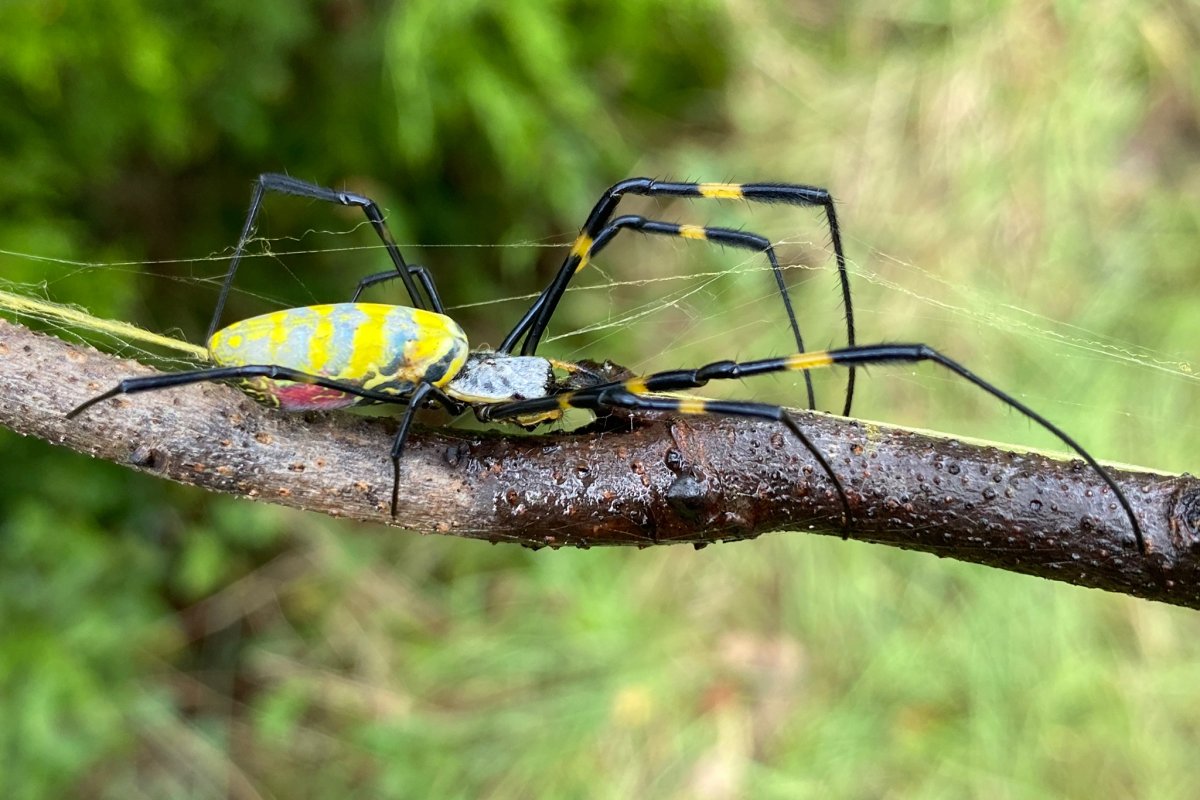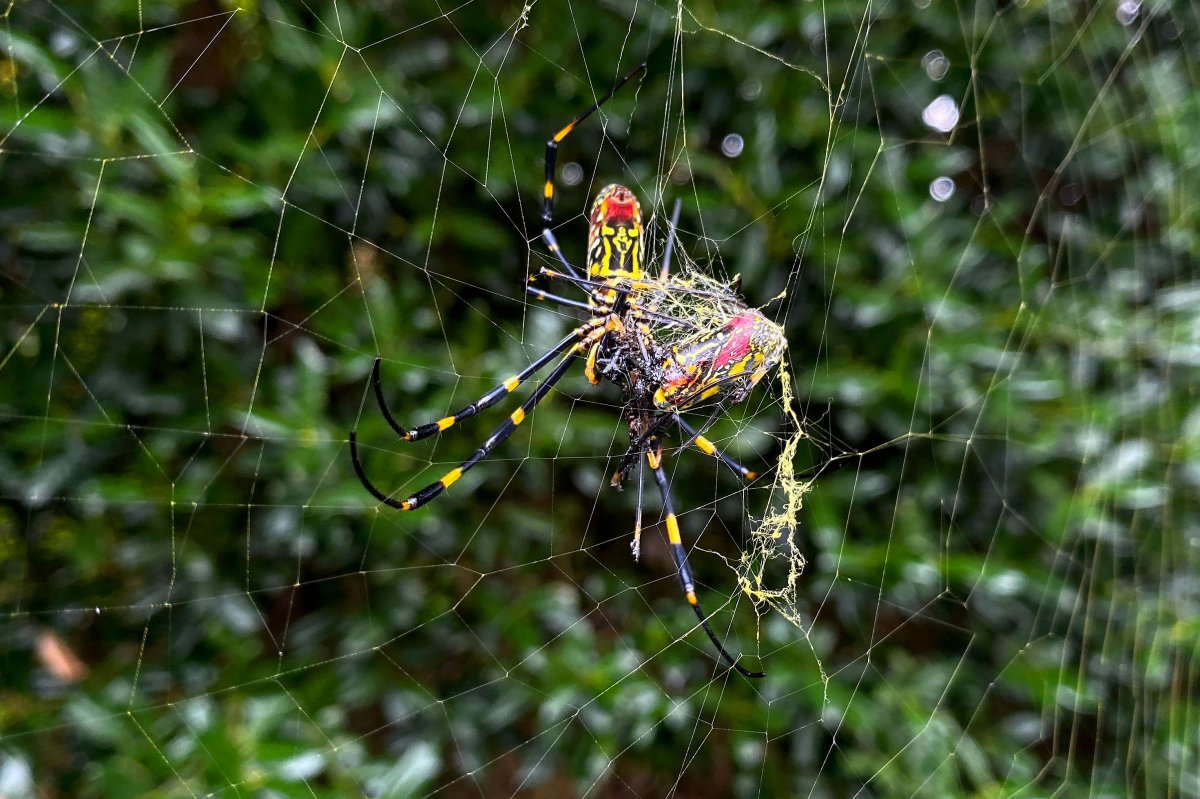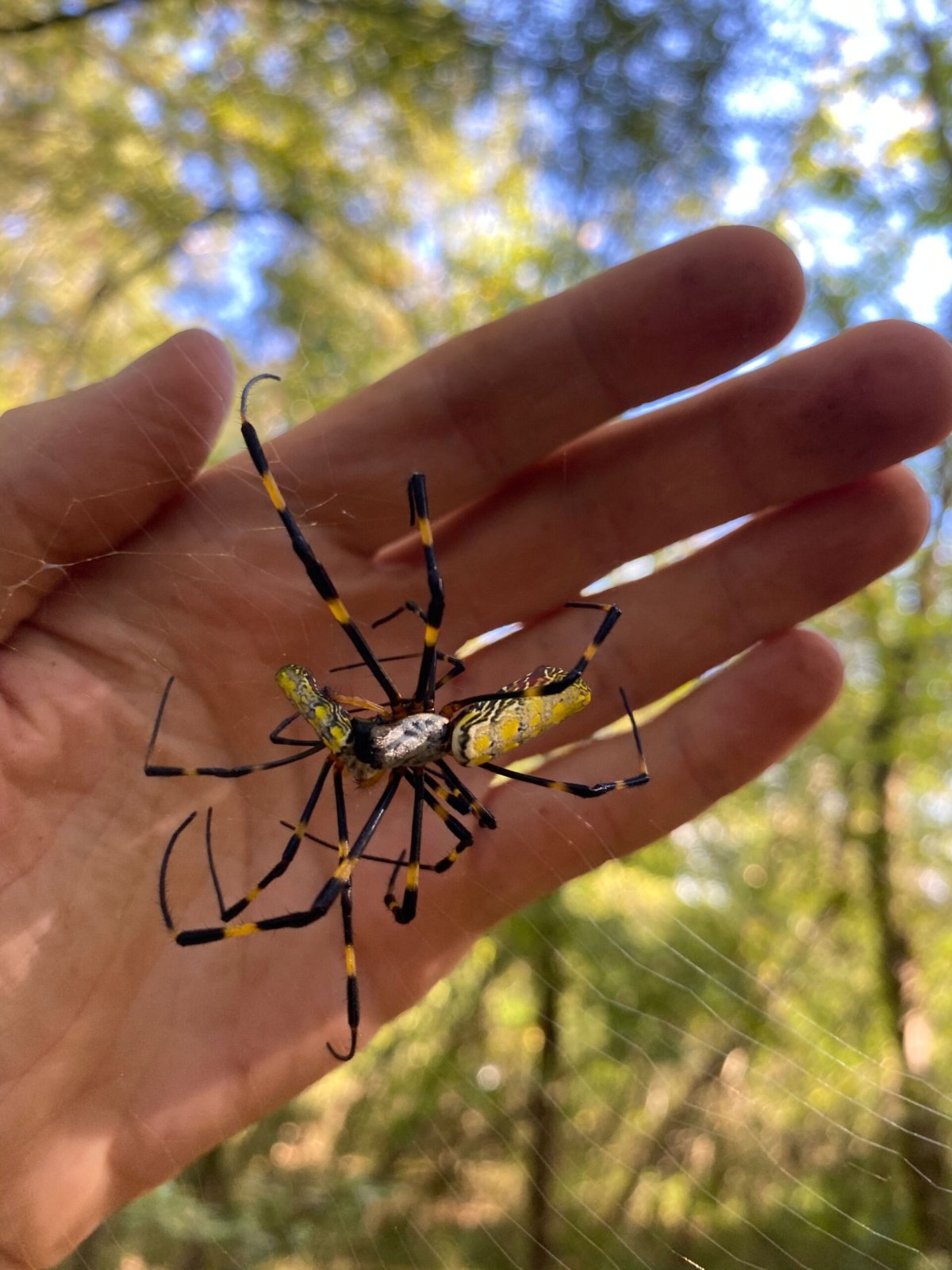The Joro spider is really good at hitching a ride on cars and trucks, said Andy Davis, research scientist at the University of Georgia and co-author of a study on the invasive spider found in the U.S.

That means one might make its way up to Canada in the next couple of years, according to Davis.
The University of Georgia stated in a press release that the Joro spider belongs to a group of large spiders known as golden orb-web weavers that make enormous, multi-layered webs of gold-coloured silk.
It is widespread in its native Japan, Korea, China and Taiwan. Since its arrival in the U.S. in 2013, new research suggests the invasive arachnids could spread through most of the eastern seaboard.
How will the Joro spider make its way to Canada?
Even though the study published in Physiological Entomology doesn’t mention Canada, Davis still thinks it’s possible for the spider to end up here.
“It’s completely within the realm of possibility that that would happen. Whether that spider establishes a viable population in Canada, that’s a different question,” Davis said.
“Maybe the spider won’t be able to survive, or maybe it will, but I can totally see a spider arriving in Canada.”
In order for the invasive spider to establish a population, the egg sack will have to survive the winter, which Davis says is possible in southern Ontario.
The Joro spider first arrived in Georgia around 2013. The way it arrived in the state might give Canadians a clue about how it might end up here.
“It was first discovered near a major interstate, which is why we think it arrived in Georgia on a shipping container. And since then, it has spread throughout most of the north and northern part of the state, and it’s now into like two or three other states nearby,” said Davis.
Can the spider survive in a cold environment?
Davis’ study contrasts the Joro spider with its relative, the golden silk spider, which first moved to southeast U.S. from the tropics around 160 years ago. The golden silk spider hasn’t been able to spread beyond the southeast due to its vulnerability to cold.
Before the study, scientists didn’t know whether the Joro spider faced similar geographical limitations, according to the university.

Get daily National news
The researchers performed tests to compare the species’ cold tolerance, including measuring the arachnids’ metabolic, heart and survival rates during a brief freeze.
The study found that despite their similarities, the Joro spider has about double the metabolism of its relative, has a 77 per cent higher heart rate and can survive a brief freeze that otherwise kills the golden silk spider. These findings mean the Joro spider’s body functions better than its relative in a cold environment.
That means the Joros can likely exist beyond the borders of the Southeast.
Davis said they’re already spreading rapidly in the U.S. and last year residents started taking notice.
“They’re so big and in-your-face and their webs are literally in your face because they tend to have webs on back porches and backyards and trees,” he said.
This year will be even worse, he added.
Davis said that the Joro spider mother will lay an egg sack in the fall, die in the winter and the babies will emerge in the spring.
“The babies sort of take a while to grow into big spiders, so we don’t see the big spiders until July or August,” he said.

Is the Joro spider harmful?
Davis said the Joro spider is pretty harmless to people and pets, and they’re very timid.
“They’re more likely to run away from you if you ever run into their web,” said Davis.
He also said their fangs are fairly inefficient and incapable of breaking human skin.
“They wouldn’t even be able to bite you if they wanted to, so no matter what, they’re pretty harmless,” said Davis.
When asked if the Joro spider is harming the local ecosystem, Davis said it’s too soon to know for sure if they are.
“We don’t really have any hard data on it. Anecdotally, it seems like the Joro isn’t wreaking havoc at the moment, like other invasive species,” he said.
Davis also went on to say that it’s probably competing with native spiders and not killing them. The Joro spider may even serve as an additional food source for native predators like birds.
READ MORE: Summer of spiders — Winnipeg sees increase in eight-legged guests
An entomologist at the University of Georgia, Nancy Hinkle, said Joros help suppress mosquitoes and biting flies and are one of the few spiders that will catch and eat brown marmorated stink bugs, which are serious pests to many crops.
“This is wonderful. This is exciting. Spiders are our friends,” she said in an Associated Press article in 2021. “They are out there catching all the pests we don’t want around our home.”
On the other hand, Ann Rypstra, who studies spider behavior at Miami University, was more cautious in her assessment of the Joro’s potential impacts, saying more research was needed.
“I’d always err on the side of caution when you have something that establishes itself where it’s not supposed to be,” she said.
READ MORE: ‘Staring at me’ — Oldest known spider ancestor found in Burgess Shale
Rypstra has studied a similar spider species and said their webs are used by other spiders as a source of food, so the Joro might help native spiders. But she said there was also evidence Joros compete with other orb weavers native to the area.
Researchers at South Carolina’s Clemson University also were wary, saying in a factsheet published online in August that they “do not yet know if there will be any negative impacts from this non-native species on the local ecology of South Carolina.”
The bottom line: there are many unknowns.
However, in light of this spider’s docile nature, Davis said it’s unfortunate that people find it scary.
“If this was a butterfly that was invasive, people would be shocked if you squished it. But no one gets shocked if you squish a spider. But it shouldn’t be that way because they’re both just arthropods and they both happen to be in the wrong place at the wrong time,” said Davis.

He thinks the Joro spider offers an educational opportunity, especially for parents and children.
“You can literally have one in your backyard in the same place or the same tree for four months,” said Davis. “You can even give it a name.”
He said parents can teach their kids about the life cycle of spiders and their importance to the environment.
“I think this spider … for all the negative things about it, it actually is this wonderful educational opportunity because they’re so big and so striking.”
-With files from The Associated Press












Comments